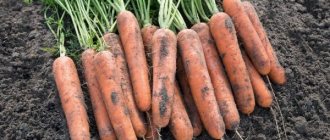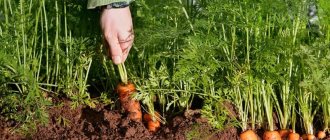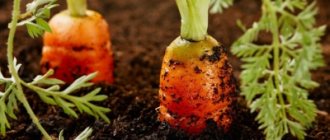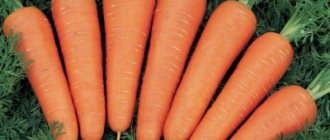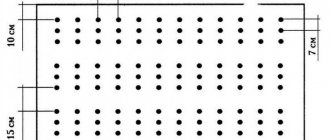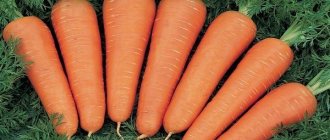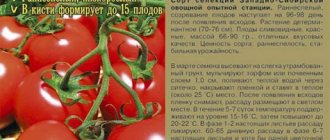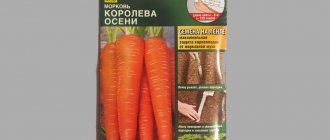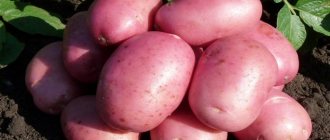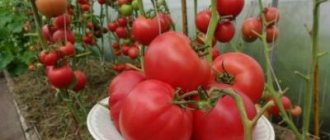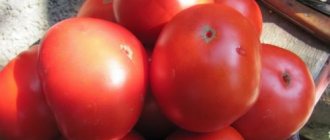History of breeding
The carrot variety Vitaminnaya 6 was created at the Research Institute of Vegetable Farming by crossing the varieties Amsterdam, Nantes of foreign selection and Tuchon. The selection was carried out by hybridization of a variety with a high content of beta-carotene.
Carrot Emperor
Late-ripening carrot variety (fruit ripening occurs 110–135 days after germination). Main characteristics:
- The root crops are large, smooth, cylindrical in shape with a slight slope down, and blunt-ended. The length of the Emperor carrot fruit is 25–30 cm, weight 90–200 g. The surface is smooth, with shallow eyes.
- The pulp is rich orange-red, dense, juicy, with a pleasant aroma. The core is small, almost the same color as the pulp.
- Emperor carrots contain a large amount of carotene. It has good taste and a pleasant aroma. Sugar content 6.6–11%, carotene – 16–25 mg.
- The yield is 2–5 kg.
- The variety is resistant to flowering and premature stemming. It produces a good harvest on light loamy and sandy loam soil. Suitable for winter sowing.
- Transports well and lasts a long time. During storage, Emperor carrots improve their quality.
- Universal use.
Advantages and disadvantages
This variety has many advantages that distinguish it from others:
- frost resistance and unpretentiousness to climatic conditions;
- good yield;
- undemanding to storage conditions;
- smooth, cylindrical root vegetables with shallow eyes;
- taste qualities;
- high content of fructose and beta-carotene.
The disadvantages of Vitamin 6 carrots include::
- susceptible to diseases;
- demanding care.
Carrot Shantanay
Mid-season productive variety (from germination to ripening it takes 90–120 days). Main characteristics:
- The root crops of Chantane carrots are large, smooth, have a truncated-conical shape, with a downward slope, and blunt-ended. The fruits are completely immersed in the ground, but can be easily pulled out. Length 13–15 cm, weight 75–200 g. The surface is smooth, with small lentils.
- The pulp is dense, rich orange-red color, with a pleasant aroma. The core is large, pronounced, light orange or yellow.
- Sugar content 7%, carotene - 12–14 mg.
- The yield of Shantane carrots is 4–8.2 kg.
- Good resistance to early stemming and diseases, carrots do not bloom or crack. Actively used in industrial crops. Excellent for growing in open ground.
- Keeping quality is good.
- Chantanay carrots are a variety for universal use.
Detailed characteristics and description of the variety
- Appearance . The carrot variety Vitamin 6 has fruits of an oblong cylindrical shape with a rounded tip. Most often, the root vegetables are smooth, without bending or deformation. The color of the fruit is bright orange, with a red tint. The core of this variety is star-shaped.
- Amount of fructose and beta-carotene . Vitamin 6 carrots are famous for their high content of vitamins, fructose and beta-carotene. Content per 100 g of carrots: fructose – 17-22 mg, carotene – 7-10%.
- Sowing time . The optimal time for spring sowing for this variety is the second half of April - early May. Vitamin 6 can also be planted before winter, in which case the harvest can be harvested in July. It should be borne in mind that such fruits cannot be stored, only used for food.
- Seed germination . The germination of seeds depends not only on their quality and brand, but also on the type of carrot. The Vitamin 6 variety is characterized by good seed germination, almost 100%.
- Average weight of 1 root vegetable . The weight of one carrot root varies between 70-170 g. Specimens weighing 200 g are often found.
- What is the yield from 1 hectare . Gardeners and farmers love this carrot variety for its high yield. With proper care and watering, the harvest from one hectare of land reaches 1 centner of root crops.
- Purpose of the variety and keeping quality . Vitaminnaya carrots are a universal variety, great for canning, freezing and for winter storage. Thanks to its good keeping quality, it can be stored and delight with excellent taste all winter. This variety is also eaten raw and used for baby food.
- Growing regions (Ural, Siberia, etc.). The most favorable regions for growing Vitamin 6 carrots are all regions of Russia except the North Caucasus. From neighboring countries, this variety is recommended for cultivation in Lithuania, Latvia, Kazakhstan and Ukraine.
- Where is it recommended to grow . Vitamin 6 carrots have good resistance to cold weather and even frost. Therefore, it is recommended to grow it in early spring in open ground, for example, in a garden plot. Planting in a greenhouse is not practical for this variety.
- Disease resistance . This variety is quite susceptible to various diseases and pest attacks. To minimize the likelihood of disease occurrence, you should change the location of the carrot bed every year. The best predecessor would be potatoes. It is not recommended to plant carrots where tomatoes, parsley, dill, legumes or fennel grew.
- Maturing period . Vitamin 6 carrots are considered mid-season. The harvest can be harvested within 3.5-4 months after sowing. We invite you to learn about other varieties of carrots based on their ripening time.
- What types of soil does he prefer ? For the cultivation of this variety, mineral or peat soils will be most favorable. The pH value should not exceed 7. In addition, the soil should be light and loose so that the carrots grow large and long.
- Frost resistance . In regions such as Siberia and the Urals, ground frosts are not uncommon. Frosty days are observed both in late spring and early autumn. Carrots of the Vitamin 6 variety are quite resistant to frost and can withstand temperatures of 0°C.. -3°C.
Planting and care
The “Vitaminnaya” carrot variety is produced in granules and on tape. It is more convenient to plant such seeds. You can do without thinning if you maintain the required distance when planting. But they require increased watering until germination.
Also, carrot seeds of this variety are produced in a gel shell and look like dragees. The manufacturer claims that after planting they do not require as much watering. The gel coating is capable of retaining moisture, which creates optimal conditions for germination. The only disadvantage of such seeds is the price.
The timing of sowing carrots of the “Vitaminnaya 6” variety may vary. Vegetable growers believe that it should be sown in mid-April. Too early can lead to slower germination and damage to the plant by pests. According to the recommendation, planting work can begin when the soil warms up to +8˚+10˚С.
Fresh manure should not be applied to the beds in the spring before planting. For heavy soils, ash is good. It acts as a potassium fertilizer.
On a note!
To make it more convenient to sow seeds, they are mixed with river sand in equal proportions. This trick will make the thinning process easier in the future.
The seeds are planted to a depth of 1.5 or 2 cm. The soil is lightly compacted. Plantings are regularly watered until the first shoots appear.
At high temperatures and lack of precipitation, the beds must be watered at least 3-4 times a week. This variety loves moisture very much, but at the same time there should not be stagnation of water. Otherwise, the vegetables will begin to hurt and rot.
As the seedlings grow, thinning is carried out. The distance between neighboring plants is left 5-6 cm.
During the growing season, fertilizing is carried out with nutrient mixtures. First, carrot beds are fertilized with urea, adding a tablespoon of the substance to a bucket of water. Later they are fed with potassium fertilizers. During the season, carrots can be fed 3-4 times.
Growing
- Experienced gardeners advise planting these carrots immediately after the snow melts for an early harvest. The soil temperature should be at least +8°C. For winter storage, you can sow until the end of May.
- Before planting, you should enrich the soil with organic fertilizers: rotted manure, wood ash or compost.
- The depth of the furrows for sowing should be 1.5-2 cm, the distance between rows should be 17-20 cm. The optimal temperature for seed germination is from +15°C. Sprouts appear after 10-12 days.
- For friendly shoots and a rich harvest, it is necessary to periodically loosen the soil. Vitamin 6 carrots love abundant watering throughout the summer. When there is enough moisture, the fruits grow juicy and large. However, care should be taken to ensure that water does not stagnate on the soil.
- If planting was done in the usual way, the seedlings must be thinned out. The first thinning should be done leaving 2 cm between sprouts, the second - at a distance of 4 cm.
Features of soil for carrots Vitamin 6
Peat and mineral soils are excellent for this variety. The variety is cold-resistant, so it can be sown before winter to obtain an early harvest, which cannot be stored - only eaten. The soil for spring planting should be:
Carrot seeds Vitamin 6
- Well aerated.
- Loosened to a depth sufficient for the normal development of long roots and roots of this variety.
- Not prone to forming a soil crust after watering.
- With a pH value of approximately 6-7.
Attention! In soil that is not loose enough, carrots will grow, but fewer seeds will sprout, and the root vegetables will be less juicy and tasty. In addition, the plant's vulnerability to fungal infections will increase.
The best predecessors for carrots are grains, legumes, cabbage, tomatoes, cucumbers and onions. Planting in place after parsley, dill, caraway seeds, parsnips, fennel and the carrots themselves will have a negative impact on the harvest. Therefore, it is recommended to regularly move the carrot “plantation” on the site from place to place. Otherwise, the risk of infection with carrot flies, aphids, Alternaria and other pests and diseases increases significantly. After harvesting, summer residents do not advise planting carrots in the same place earlier than after 3-4 years.
Harvest and storage
It is better to harvest carrots immediately after ripening; the plants themselves will tell you when this moment has come. If the lower leaves of root crops turn yellow, it’s time to reap the harvest. If you planted in mid-April, you will need to harvest around August.
Provided that the necessary parameters are observed, Vitamin 6 can be stored for a long time; after lying there all winter, it will not lose its taste. These useful root vegetables can be stored both in the cellar and on the loggia in an insulated box. Before storing vegetables for winter storage, they must be dried in the open air or in a ventilated area.
Moscow winter carrots
Mid-season, high-yielding variety (70–100 days from germination to ripening). Main characteristics:
- Root crops are elongated-conical, blunt-pointed. The length of the Moscow winter carrot fruit is 15–18 cm, weight 100–170 g. The surface is smooth, orange in color.
- The pulp is juicy, tender, with a pleasant aroma. The core is small, round or irregular in shape.
- Moscow winter carrots have excellent taste. Sugar content 7.6–8%, carotene – 10–12 mg.
- The yield is 5–7 kg.
- Disease resistance is average. Moscow winter carrots are often used for sowing before winter.
- Keeping quality is good, one of the best varieties of carrots for long-term storage.
- It is a variety of universal use.
Of all the varieties of carrots with photos and descriptions, it is better to choose those that fully meet the needs of the gardener and growing conditions. For sowing, it is recommended to select several varieties with different periods of technical ripeness and taste. In this case, you can enjoy delicious root vegetables throughout the year.
Diseases and pests
Diseases and pests can become a real disaster for gardeners cultivating carrots in their beds. The most common diseases of the Vitamin 6 variety are:
- Phomasis;
- rhizoctoniasis;
- bacterial rot.
The most dangerous and common pests of the variety:
- carrot psyllid;
- slugs;
- wireworm
Various problems during cultivation and ways to solve them
When cultivating these useful root crops, gardeners often encounter various difficulties. Let's look at the most common problems and possible ways to solve them.
| Sign of a problem | Cause of the problem | Solution |
| Early curling and discoloration of carrot leaves to burgundy | Potassium deficiency | Apply potash fertilizer |
| The appearance of many hairs on the root crop | Watering too much | Keep watering to a minimum after the second thinning. |
| Darkening of the core | Manganese and barium deficiency | After 5-6 leaves appear, carrots should be treated with microelements (sprayed) |
| Root crops have become multi-tailed | Excessive application of fertilizers containing ash, lime or nitrogen | Reduce the amount of nitrogen fertilizers, do not add ash to the soil |
| Fruit cracking | Excess moisture or nitrogen | Reduce watering and stop adding nitrogen fertilizers to the soil |
Similar varieties
Varieties similar in their properties to Vitamin 6 carrots:
- Losinoostrovskaya - bright, sweet root vegetables for universal use.
- Nantes is a mid-season, productive variety.
- Shantane is a productive, shelf-stable variety with high taste qualities.
- Tushon is a fast-growing type of carrot that is resistant to blooming.
- Emperor is a cylindrical root vegetable with a high carotene content.
It is difficult to overestimate all the advantages of the Vitamin 6 carrot variety. Thanks to its smooth, cylindrical shape, this carrot is convenient for cooking. You can eat it raw, add it to dishes, freeze it, or store it for winter storage. Productive, shelf-stable, incredibly tasty and healthy, it will immediately become a favorite delicacy of any family.
Read about the best varieties of carrots that are considered productive, unpretentious and tasty - Red Giant, Abaco, Dordogne, Boltex, Laguna, Baltimore, Samson, Karotel, Sentyabrina and Moscow Winter.
Carrots of the “Vitamin 6” variety: description and some tips for growing
Carrots are one of the most common vegetable crops, which many summer residents cultivate in their garden plots.
To ensure successful cultivation, it is recommended to choose the variety wisely. It is worth carefully studying the description of the vegetable crop and listening to the reviews of those who have already planted this or that carrot in their dacha. An excellent solution is Vitamin 6.
The attractiveness of this variety lies in its high yield, excellent keeping quality and excellent taste of root crops.
The main pros and cons of the variety
As for the negative qualities of this vegetable crop, it is worth noting that the variety is not very resistant to diseases characteristic of this type of plant.
However, if you carry out preventive measures in a timely manner, it is quite possible to protect carrots from rot. It is also easy to prevent carrot flies.
For this purpose, a large number of ready-made chemicals and folk methods have been created.
According to reviews from summer residents, the Vitamin 6 carrot variety is very unpretentious. The plant develops well even in unfavorable, harsh conditions. Root vegetables grow well in regions where other varieties fail to thrive.
Weight of “Vitamin 6” carrots – up to 200 grams
Advice. “Vitaminnaya 6” is suitable for those gardeners whose plots are located in regions with difficult climatic conditions, since this variety is resistant to premature stemming and flowering.
Growing this vegetable crop is not difficult. The main thing is to choose the right site for this plant. The variety is suitable for sandy and light loamy soils. The seeds are sown in late April. The depth is approximately 3 cm. Approximately 18-20 cm is left between the planting material.
The first thinning is recommended to be carried out approximately a couple of weeks after all seedlings have emerged. When the vegetables are about 1 cm in diameter, you will need to thin them a second time.
Carrots “Vitamin 6” are an excellent variety that is known to many gardeners and has proven itself well.
Carrots “Vitamin 6” - video
Source: https://eteplica.ru/ovoshhi-v-teplicax/morkov-sorta-vitaminnaya-6.html
